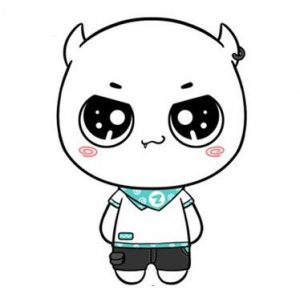1. Process: tailoring – sewing – assembly – filling – integer – packaging
2. The production of plush toys must first carry out an overall style design and style determination, the choice of toys is more, according to different design needs in the style will be different, so it is inevitable to be able to design first. You can start with a concept, determine the image plane, and evaluate whether it can be processed.
3. After having a basic image, it is inevitable to carry out three-dimensional cutting of the toy and the use of the material. The three-dimensional piece is a more effective and intuitive way, which can be expressed by the two-dimensional concept, etc., and the part to be cut and stitched can be represented by lines, and the piece of material directly determines the quality of the design, is the toy design. A more complicated and cumbersome part of the process.
4. Trial production refers to a process that is carried out after repeated modification of the piece, that is, experimental processing to see if it can achieve the desired effect. If there is any need to modify the trial, it will be re-cut until it can produce a satisfactorily finished toy.
5. Materials: plush, chemical fiber fleece (drawing, velvet) acrylic cotton, both plastic particles, artificial leather, non-woven fabrics, toy parts, accessories
6. The consumption situation: medium toys about 18CM-25CM, the consumption of stuffed toys is more complicated, the consumption depends mainly on the number of toys, each variety of several raw materials, each proportion, the size of the toy, raw materials Whether the width is fully utilized, whether the blanking is mechanized, etc.
7. Reasonable design, typesetting, an organization of production, the use of modern equipment is the main factor to reduce costs.
Standard:
1. In view of the strict requirements on the safety of toys in Europe and the United States and other countries, and the claims of foreign consumers for domestic toy manufacturers due to safety issues frequently occur. The safety of toys must be highly valued by the people involved.
- The manual needle must be placed on the fixed soft bag, and it can not be directly inserted into the toy so that the person can pull out the needle;
- The broken needle must find another needle, and then report the two needles to the supervisor of the workshop team in exchange for a new needle. The toy that cannot find the broken needle must be searched by the probe;
- Only one working needle can be sent per hand. All steel tools should be placed in a uniform manner and should not be placed at will;
- Correctly use the steel brush with the bristles. After the bristles are finished, touch the bristles by hand.
2. The accessories on the toy body, including the eyes, nose, buttons, ribbons, bow ties, etc., may be devoured by the child (consumer) to swallow, dangerous, so all accessories must be tightly fixed, and meet the tensile requirements.
- The eyes and nose must withstand the tension of 21LBS;
- Ribbons, flowers, buttons must withstand 4LBS of tension;
- The post inspector must constantly test the tension of the above accessories, sometimes find problems, and solve them together with the engineer and the workshop;
3. All plastic bags for packaging toys must be printed with a warning and punched at the bottom to prevent the child from getting dangerous on the head.
4. All filaments, the mesh must have warnings, age signs.
5. Toys, all fabrics, accessories must not have toxic chemicals in order to avoid the danger of children’s tongue;
6. There should be no scissors, metal objects such as drill bits left in the package.







